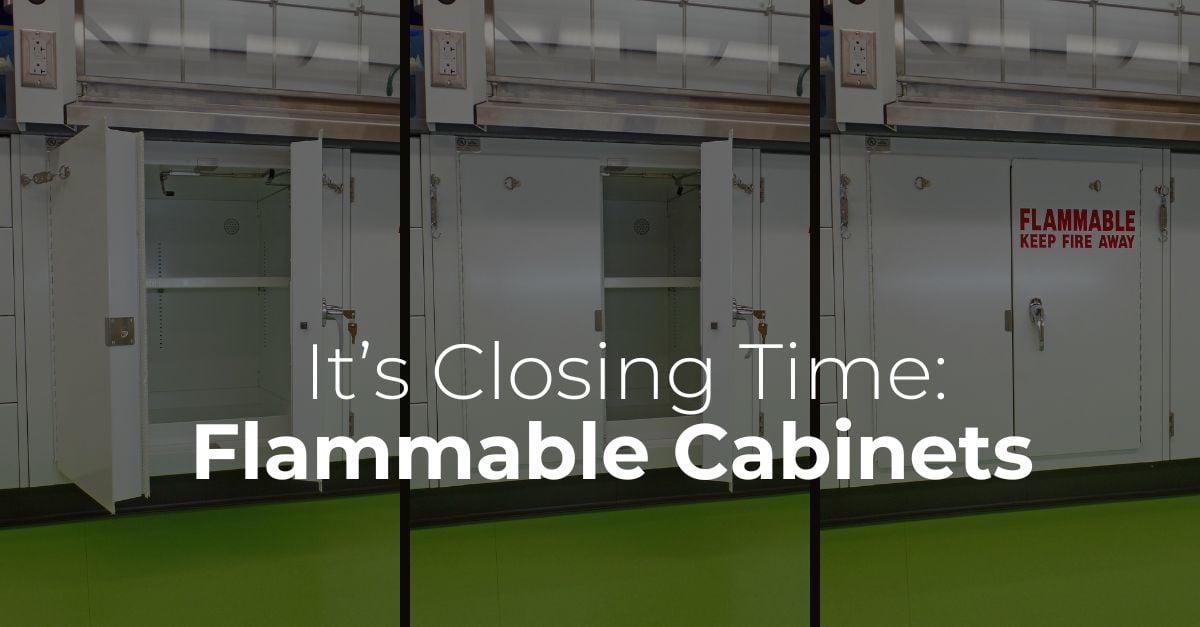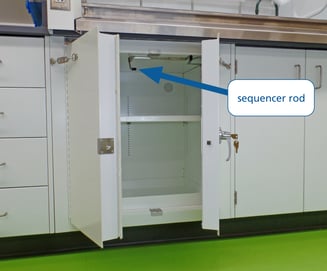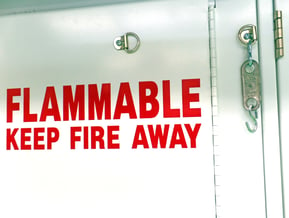
Would you leave the front door to your home wide open? Your car? I didn’t think so. Similarly, we should not leave the doors of solvent (aka “flammable”) storage cabinets open except when actively using them. Solvent cabinets are designed, tested, and constructed in compliance with several industry standards to provide a minimum amount of time before the flammables will ignite during a fire event outside the cabinet. These few minutes are critical for both the evacuation of lab occupants and for firefighting, but this minimum time cannot be achieved if the doors are left wide open. Doors must be completely shut to expect a delay in the internal temperature rise within the cabinet.
Underwriters Laboratories (UL) has recognized the valid concerns of solvent cabinet doors being left open purposely or inadvertently and as of Oct 31, 2024, UL Standard 1275 will require self-closing doors on all solvent cabinets. Many states have already adopted NFPA 1 (Uniform Fire Code) and/or the International Fire Code (IFC) and thus already require self-closing doors on flammable storage cabinets. Additionally, some municipalities require self-closing doors, even if their state building codes do not. As always, it is best to check with your code consultant or local authority having jurisdiction (AHJ) about which codes affect your facility.

To achieve the fire resistance needed when cabinets have two doors, the doors physically overlap with a gasketed astragal between them. This design requires that a specific door must be closed before the other. Thus, cabinets with two-door closers are also equipped with a “sequencer” rod that will hold open the door that shuts last, not releasing it until the first door has fully closed.
There are times when a solvent cabinet’s doors need to be held open because both of the user’s hands are required for the safe loading and unloading of solvent containers. Optional “fusible links” are available and are special chains used to keep the doors open. If there were a fire in the lab while the doors are held open with the chains, the fusible portion would melt at approx. 165F releasing the bond between two links, allowing the cabinet doors to then automatically close properly.

Lastly, some existing solvent cabinets can be easily upgraded with automatic door closers, sequencer rods, and fusible links and still maintain their UL listing. If you are interested in this service, contact New England Lab for more information. Please provide the cabinet width and the serial number to determine the required parts.
In summary, doors left open on solvent cabinets pose real dangers to lab occupants and first responders and must be minimized. Training users on proper behaviors (“administrative controls”) can work when reinforced by inspections and repeat training. But bad habits can develop over time. The best way to ensure that solvent cabinet doors are closed is with self-closers, sequencers, and fusible links (“engineering controls”).
References:
International Code Council, International Fire Code (IFC)
NFPA 1, Fire Code
UL 1275-2021, Standard for Safety Flammable Liquid Storage Cabinets
Acknowledgments:
Andy Sinnamon, Technical Advisor, Lab Products - Mott Manufacturing, Brantford, ON Canada
Rand Weyler, Director of Client Technical Support - New England Lab, Woburn, MA USA
Author:
Ken Crooks, Business Development A/E
New England Lab, www.newenglandlab.com
O: 781-932-9980 x8808

 copyright 2014, new england laboratory casework co., inc
copyright 2014, new england laboratory casework co., inc 

